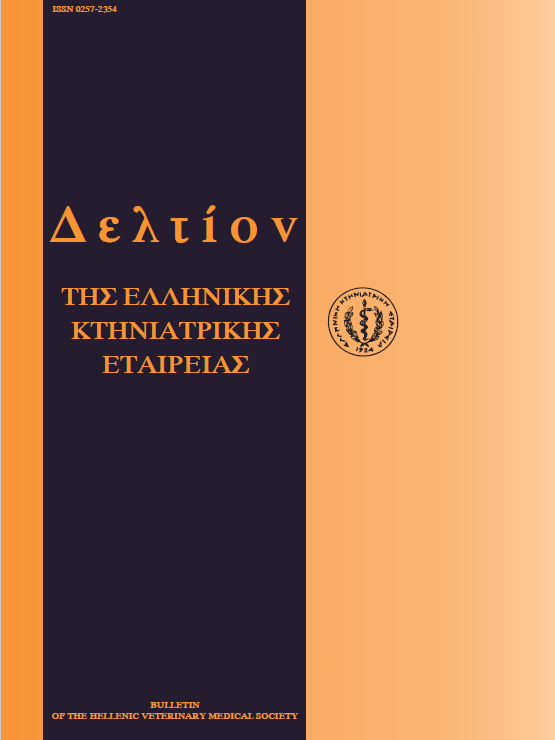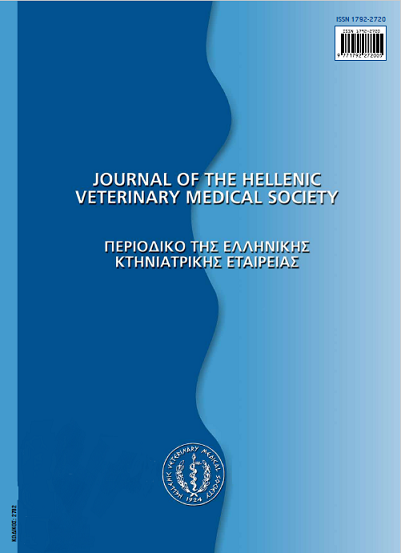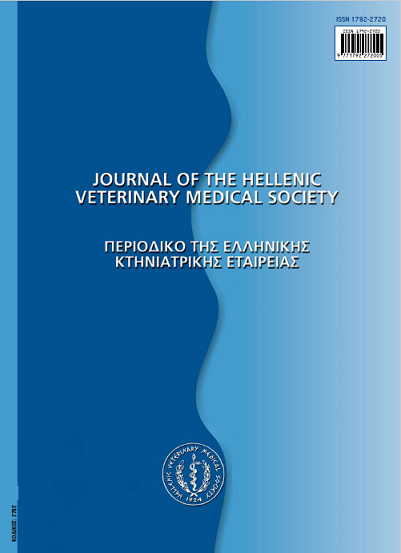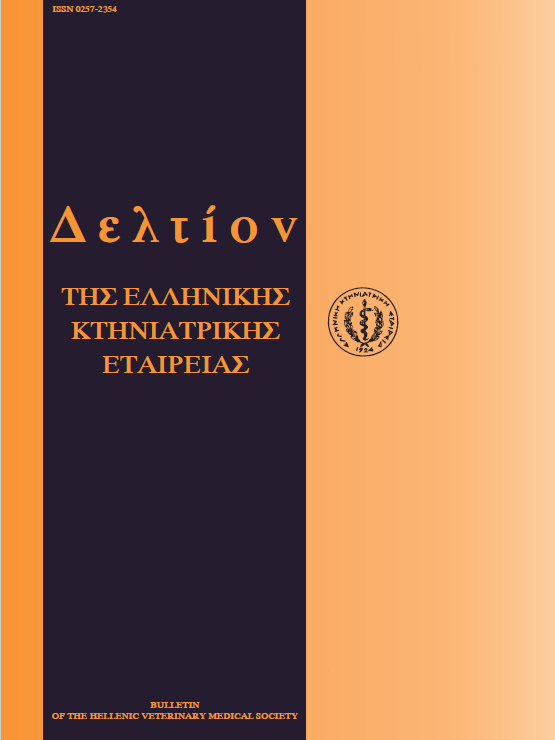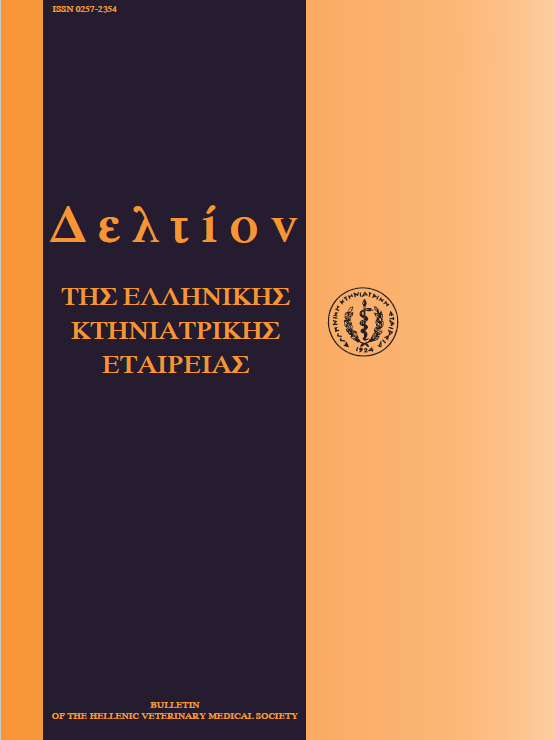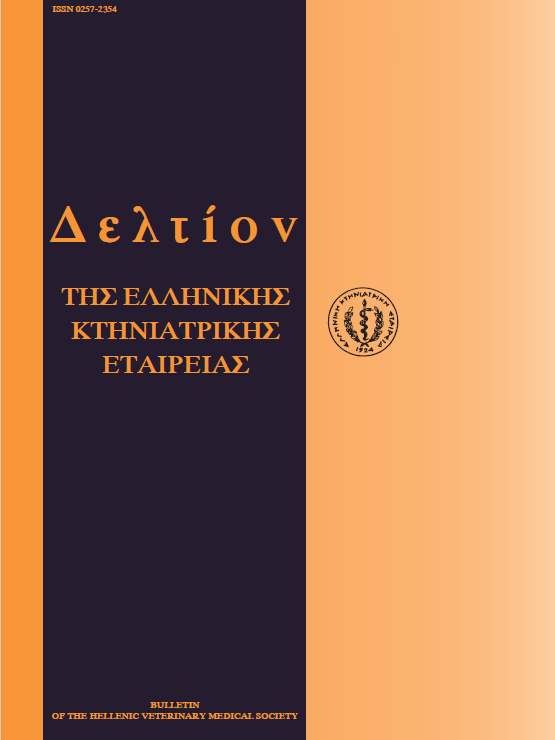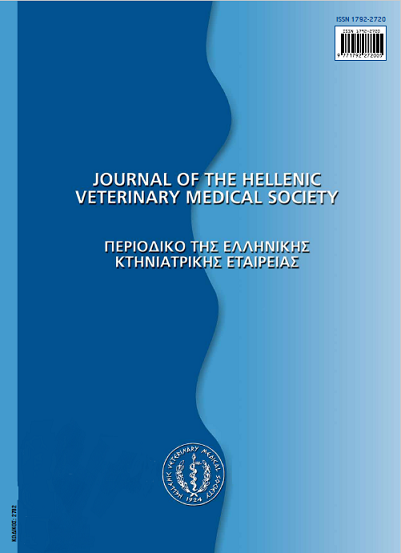Serum progesterone and oestrone sulphate concetrations for monitoring fertility in Sows
Abstract
Blood samples were taken from 161 sows the days 19-21 (serum progesterone assessments), from 306 sows on days 24-30 (serum oestrone sulphate assessments) and from 150 sows on day 20 (serum progesterone assessments) and on days 26-29 (serum oestrone sulphate assessments) after service. Actual farrowing or abortion and signs of return to oestrus were used as criteria for pregnancy and non-pregnancy, respectively. Litter size was also recorded at each farrowing. The results showed that the overall accuracy of progesterone and oestrone sulphate for predicting pregnant sows was 90.7% and 97.2%, respectively. The highest accuracy of oestrone sulphate (100%) was noticed on days 27 and 28 after service. The overrall accuracy of the combination of both progesterone and oestrone sulphate assessments to detect pregnant sows was 97% and to detect non-pregnant sows was 100%. Significant correlation coefficients between serum oestrone sulphate concentration and litter size were found on days 24,26,27, 28,29 and 30, but the highest correlation coefficient was noticed on day 28 after service (r=0.51, Ρ, 0.001). Moreover, it was also found that mean litter size was significantly higher (P <0.05). in sows with serum oestrone sulphate concentrations > 1 ng/ml compared with concentrations < 1 ng/ml from day 26 up to day 30 after service. It is concluded that serum progesterone assessment helps in the determination of the non-pregnant sows early enough for problems related to failure of fertilization to be promptly dealt with. Serum oestrone sulphate concentration on day 28 after service can be used as an indicator of conception, as a predictor of small litter size and also can help in the estimation of embryonic mortality. The combination of these two assessments, in addition to their value in pregnancy diagnosis, can be useful in identifying concurrent reproductive problems in units with sub-optimal productivity.
Article Details
- How to Cite
-
STEFANAKIS (Α. ΣΤΕΦΑΝΑΚΗΣ) A., BOSCOS (Κ. Μ. ΜΠΟΣΚΟΣ) C. M., ALEXOPOULOS (Κ. ΑΛΕΞΟΠΟΥΛΟΣ) C., KYRIAKIS (Σ.Κ. ΚΥΡΙΑΚΗΣ) S. C., & KRAMBOVITIS (Η. ΚΡΑΜΠΟΒΙΤΗΣ) E. (2018). Serum progesterone and oestrone sulphate concetrations for monitoring fertility in Sows. Journal of the Hellenic Veterinary Medical Society, 50(4), 276–282. https://doi.org/10.12681/jhvms.15721
- Issue
- Vol. 50 No. 4 (1999)
- Section
- Research Articles

This work is licensed under a Creative Commons Attribution-NonCommercial 4.0 International License.
Authors who publish with this journal agree to the following terms:
· Authors retain copyright and grant the journal right of first publication with the work simultaneously licensed under a Creative Commons Attribution Non-Commercial License that allows others to share the work with an acknowledgement of the work's authorship and initial publication in this journal.
· Authors are able to enter into separate, additional contractual arrangements for the non-exclusive distribution of the journal's published version of the work (e.g. post it to an institutional repository or publish it in a book), with an acknowledgement of its initial publication in this journal.
· Authors are permitted and encouraged to post their work online (preferably in institutional repositories or on their website) prior to and during the submission process, as it can lead to productive exchanges, as well as earlier and greater citation of published work.

